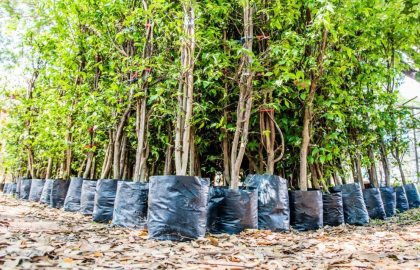UP’s Green Drive: Herb Stretches on Highways, Plantation Drive Near Taj Mahal

Herbals Plant stretches Along UP Highways
Uttar Pradesh government is planning to plant herbal Ayurvedic plants along the highways in the state to improve air quality and also promote Ayurveda. According to Deputy Chief Minister Keshav Maurya who also heads the PWD Department, Uttar Pradesh is on its way to becoming the first state to implement the plan which is an extension of the Ayushman Bharat Yojna.
A pilot project has been launched in 18 districts. The project aims at curbing the growth of non-native species such as cacti and bonsai in homes, offices and parks, and promoting plants mentioned in the Ayurveda system of medicine. Plants like turmeric (haldi which is used in cooking and has anti-bacterial properties), brahmi, ashvagandha, anantmula, janofa, mashparni, saptparni, tulsi and jal meem are among the 34 herb varieties that have been identified for plantation along the highways.
A pilot initiative has already been implemented on busy stretches of the Delhi-Yamunotri state highway 57 in Saharanpur, Ashapur-Sarnath in Varanasi, Panchkosi-Parikrama in Ayodhya, Gorakhpur-Deoria, Aligarh-Mathura highway via Keshavdham and the Banda-Bahraich highway in Chitrakoot.
Another Plantation Drive Near Taj Mahal
For this July-August, Uttar Pradesh Forest Department has announced planting of a record 1.02 crore saplings here to tackle a spike in the air pollution figures in the eco-sensitive Taj Trapezium Zone.
This is a part of the Chief Minister, Yogi Adityanath’s plan which has set a target of planting nine crore saplings by August 15 within this year. He had announced that trees rich in medicinal properties( as above) and of religious significance will be planted across the state.
For 2018-19, the Uttar Pradesh government wants to break all records. The target is to plant 22 crore saplings at a cost of Rs 1,000 crore. Work on preparing planting sites has already begun. Mainpuri, Firozabad, and Mathura will also plant lakhs of saplings, according to Forest Conservator Javed Akhtar.
The Yogi Adityanath government’s target for this year is 22 crore. Last year, it was 9 crore.
For Agra alone, the target is 28.50 lakh saplings. All government departments have been allotted targets and the state nurseries are busy preparing saplings.
Despite yearly charade of planting (medicinal or religious) saplings every year which sees pompous claims being made by authorities, the green cover in Uttar Pradesh remains a dismal 9%, against the national goal of 33%.
Take the case of Agra, which is fast turning into a vast wasteland, said eco-activist Shravan Kumar Singh. “The large-scale construction work going on all around has denuded the landscape of green cover. More roads, more houses, more public projects means reduced space for greenery. The 10,600 sq km eco-sensitive Taj Trapezium Zone has a green cover from precariously low at 1.28 percent in Mathura district to 6.26 percent in Agra,” according to Singh.
“Last year we saw how hastily saplings were planted in a haphazard manner with no one responsible for maintenance and care. Only a small percentage survived,” said Shravan Kumar Singh, a green activist in the Taj city area. Without proper care, they just remain mere paper trees, he adds.
Environmentalists in the state say not only elaborate preparation, but the plants also need involvement by locals and provision of basic infrastructure, as well as personal level monitoring. One such example is in Mathura. In Mathura, a unique experiment launched by the Yamuna Mission has started to yield results. Rashmi Sharma, local in-charge of the project told news agency,” Utilising treated waste and sewer water from drains a sprawling green space along the Yamuna has been developed. Right from Kans Kila adjoining the famous Vishram Ghat, a green belt till the periphery of Vrindavan town is being gradually developed. The advantages are several. The dust has been controlled. The vast stretch of wasteland has been utilized. Drains are not opening into the river and new picnic spots have come up.”




